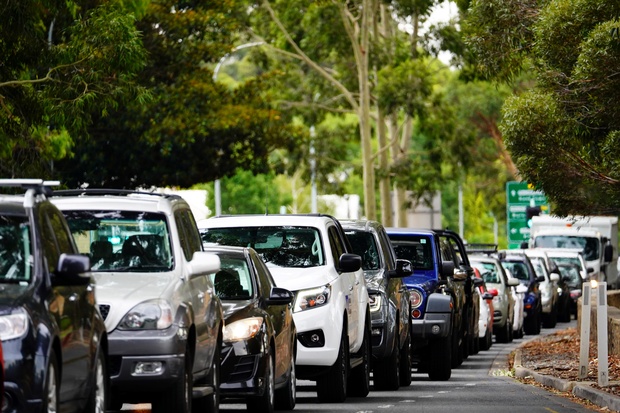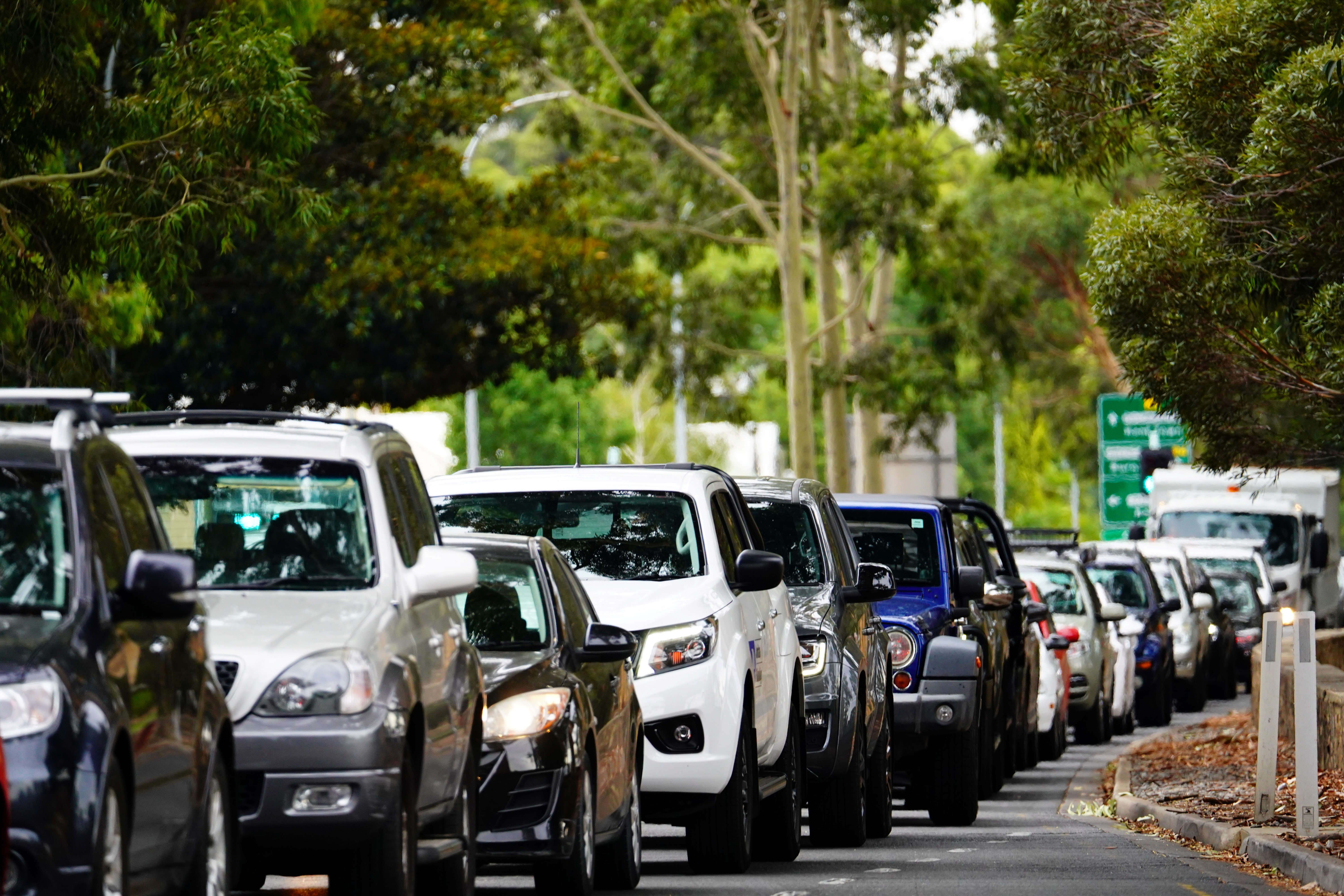Produced by the Climate Council and titled Airborne hazard: How air pollution harms our kids the report reveals 827 schools and more than 2300 childcare centres in our capital cities are within 100 metres of a busy road.
Childcare centres are the most likely to be located near a busy road (21 per cent), followed by secondary schools (17 per cent), and primary schools (15 per cent).
Climate Council CEO, Amanda McKenzie, says it’s no revelation that schools and childcare facilities are in highly accessible locations, however not a lot of daylight is given to the implications.
“It’s not just that they’re on a busy road and people are going quickly by, it’s also that with drop-offs and pick-ups, parents are often idling in their car right outside the school,” she tells EducationHQ.
“So, the pollution is growing exponentially as they do that. So all of those [factors] are particularly concerning, [given] the increased risk of health issues.”
The report shows that children exposed to air pollution face an increased risk of short- and long-term health issues, including asthma attacks, reduced lung function and respiratory conditions.
While kids are more vulnerable to the harmful effects of air pollution due to their physiology, size and behaviour, compared to adults, children also experience greater exposure to air pollution, the reports says.
“This is because they inhale more air per kilogram of body weight and have faster breathing rates, which means that they are more susceptible to air pollution,” it warns.
“Due to their shorter height, children are also often closer to sources of air pollution and exposed to higher concentrations.”
Solutions are not simple, particularly given childcare centres and schools cannot be easily relocated away from busy roads, however air quality can be improved by the implementation of strategies to support cleaner forms of transport.
“We can also take steps to safeguard children’s health by ensuring that new schools and childcare centres are built in locations away from air pollution sources such as industrial facilities and high traffic roads,” the report reads.
“Introducing clean air zones around schools can also benefit the health of children.”
McKenzie says it’s a situation that can be addressed and doesn’t need to go on forever.
“There is already a substantial move to more clean energy,” she says.
“Forty per cent of our economy is now powered by renewables, and with the new fuel efficiency standards that the Federal Government has brought in and support from the states, there are more and more electric vehicles on the road.
“But as is clear in our report, our advocacy is to get more public transport, more active transport, more opportunities for shared transport so Australians can get out of their cars and we can reduce pollution together.”

Source: Airborne hazard: How air pollution harms our kids the report
But it’s not only outside in the playground where air quality is impeding the development and all-round health of students – and teachers – the air inside schools is also of growing concern.
For starters, there are no government-mandated standards for indoor air quality, despite that fact that Australians spend 90 per cent of their time indoors.
Geoff Hanmer, an adjunct professor of architecture at the University of Technology Sydney, told the ABC News website last week that even though since the mid-70s Australia has made decent efforts to clean up outdoor air quality, “indoor air is something that we’ve neglected for many years … particularly in schools”.
Despite clear warnings during COVID of air flow and air quality problems in schools, little it seems has been done to address it.
“For a lot of that period, quite a few schools were closed … but we can see that the schools that were open, if they had poor ventilation, they tended to have super-spreader events,” Hanmer told ABC News.
A recent study of 60 New South Wales public schools found if windows were shut, classroom carbon dioxide (CO2) levels easily exceeded 2,500 parts per million (ppm) – to put that in perspective, the National Construction Code specifies indoor CO2 levels should not exceed 850ppm averaged over eight hours, but this is only a guideline.
“When we’ve measured schools, we find often that the quality of indoor air is pretty terrible,” Hanmer told the publisher.
“It starts to affect [students’] … capacity to understand things, and consequently, their capacity to learn and participate in class.
“Afternoon rattiness [at school] is another by-product of this.”
The air expert said investing in HVAC systems in schools is one way of improving air quality in classrooms.
The systems provide temperature control as well as fresh air, and while they might cost around $2 billion a year over five years, compared to the estimated $24 billion a year cost that inadequate indoor air quality racks up each year, that seems an obvious cost-effective solution.
For now, in terms minimising the impact of dubious outdoor air quality around schools, McKenzie says there are local-level things we can all be doing.
”There’s lots of great initiatives now for schools to be encouraging kids to walk, to cycle, and [for teachers and school leaders] to leave the car at home, because it ultimately is a shift that we’re all needing to make as a community to get away from more polluting transport,” she says.
“And that can start at the school level. So that would reduce the idling outside of school and the traffic clogging up, which increases the risk of poor air quality.
“You can’t obviously move the school, but I think there are lots of opportunities to do collective advocacy as well.”
This might include groups like Parents for Climate Action [and Teachers for Climate Australia], she notes.
Climate Councillor and public health physician, Dr Kate Charlesworth, says as a mother and a doctor, she wants to see fewer and fewer people showing up unwell in our health system because of air pollution.
“The good news is that we can reduce transport pollution by cleaning up our vehicles and investing in shared and active transport,” she says.
“There’s no reason why we can’t be doing more to clean up our roads and our lungs at the same time, right now.
“We’ve started cutting transport pollution with electric vehicles and encouraging people in our cities to use shared and active means of getting around, but we need to move faster.”
Welcome to #COP29Azerbaijan. Today, world leaders and Parties convene for the 29th session of the Conference of the Parties to the United Nations Framework Convention on Climate Change to engage in critical climate negotiations, to deliver deep, rapid and sustained emission… pic.twitter.com/Tf3XbZW0PG
— COP29 Azerbaijan (@COP29_AZ) November 11, 2024
World leaders and climate experts, meanwhile, are coming together for the COP29 summit in Azerbaijan, which began today.
It kicks off just days after incoming US president Donald Trump signalled he would pull America out of Paris Agreement climate targets.
Climate Minister Chris Bowen, who is representing Australia at the two-week summit, says his nation is punching above its weight on the world stage in reducing emissions.
But he says countries needed to aspire to higher targets.
“Maintaining momentum and maintaining high ambition at COP cannot be taken for granted,” he says.














